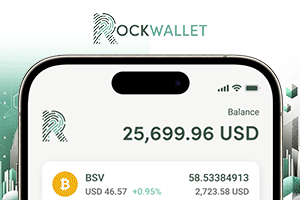|
Getting your Trinity Audio player ready...
|
Japan may be about to approve the first yen-denominated stablecoin, according to reports. Private fintech firm JPYC is seeking approval from the country’s Financial Services Agency (FSA) to issue up to JPY 1 trillion worth of the asset, possibly later this year.
JPYC has already begun issuing a prepaid digital asset named “Prepaid JPYC,” but wants to take advantage of recent regulatory changes in Japan to gain first-mover advantage with a 1:1 digital yen. There are indications it will launch the new stablecoin on Mitsubishi UFJ’s Progmat (NASDAQ: MUFJ), which combines “blockchain and other advanced technologies” on a permissionless platform and has onboarded several other major Japanese financial institutions to its company deck.
JPY 1 trillion is about US$6.78 billion, and JPYC is looking to issue that total over three years. However, if successful in the market and at maintaining its 1:1 JPY peg, that number could be expected to rise substantially.
Japan’s digital asset traders are relatively starved for opportunities to park value in stablecoins, compared to the rest of the world. There are strict KYC regulations to keep stablecoin users and traders in check, and regulators only approved the first USDC license for exchanges earlier this year. Currently, there are no other options to hold fiat value on local digital asset exchanges other than actual JPY deposits.
Stablecoin uses and implications
Though the concept of stablecoins has been around for years, 2025 headlines suggest it could become blockchain’s “killer app” and even a preferable option to central bank digital currencies (CBDCs). Stablecoins offer blockchain’s advantages in terms of speed (mostly), security, and accessibility without the price volatility of other digital currencies. CBDCs, on the other hand, are often regarded with skepticism by governments, the general public, and even central banks themselves. Though several CBDC trials and pilot programs exist today, it’s unclear if they’ll ever emerge from them in any useful form.
Accompanying the recent passage of the GENIUS Act in the United States was the Anti-CBDC Surveillance State Act, which reflects the above-mentioned skepticism by explicitly prohibiting the U.S. Federal Reserve from developing (or even studying) its own digital currency. The latter act has been passed by the House of Representatives, but not the Senate.
Stablecoins appear far more palatable to all parties, so long as users can trust them to retain their fiat currency pegs. The government can pass laws to regulate this, while the daily operation of the coin remains the domain of one or multiple private issuers. Governments can also avoid the responsibility of guaranteeing a stablecoin’s value, or insuring users’ deposits/wallets.National currencies, but also not national currencies
Eventually, we may see two-tiered national currency systems emerge. Governments and central banks could maintain control over usage and interest rates in their national currencies within their borders, while also allowing less-regulated “offshore” markets and transactions overseas—in units bearing similar names. Though riskier than transacting in “actual” dollars or yen, these offshore units could be trusted to the “close enough” level. This, in turn, increases the prestige and global usage of a country’s national currency without risking domestic economies.
This is already happening to a certain extent with Tether (USDT), now widely used internationally in remittances and daily digital transactions, despite not being a “real U.S. dollar.”
Most of the initial excitement related to the proposed JPYC coin comes from hedge funds and other asset price speculators, but if the Japanese government permits its use outside Japan (or allows other companies to also issue JPY stablecoins), it could boost international demand for the “real” JPY in general.
It’s also possible the Japanese government has noticed (again, using Tether’s example) the potential of private stablecoin companies as buyers of government bonds. The main customers for these bonds, the Bank of Japan (Japan’s central bank) and domestic financial institutions, have recently been more hesitant to snap up government debt than usual.
Watch: What is the number one use case for blockchain?

 08-22-2025
08-22-2025 





